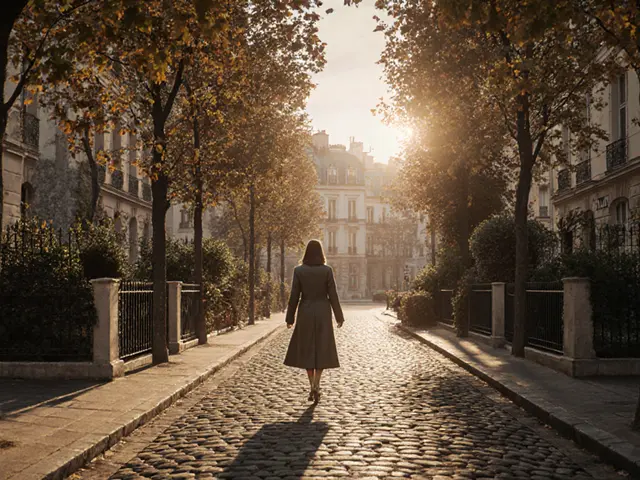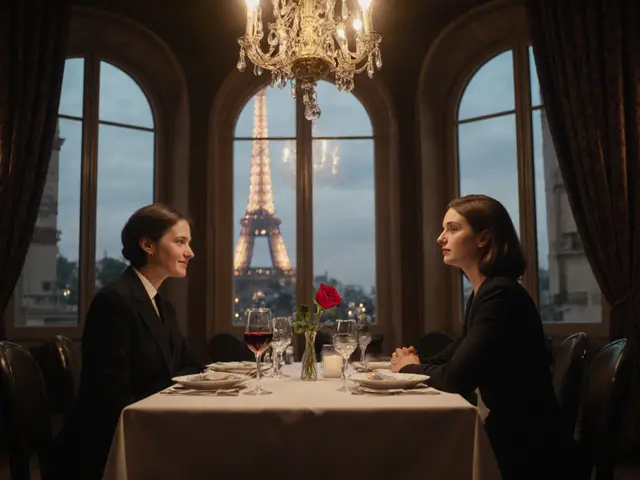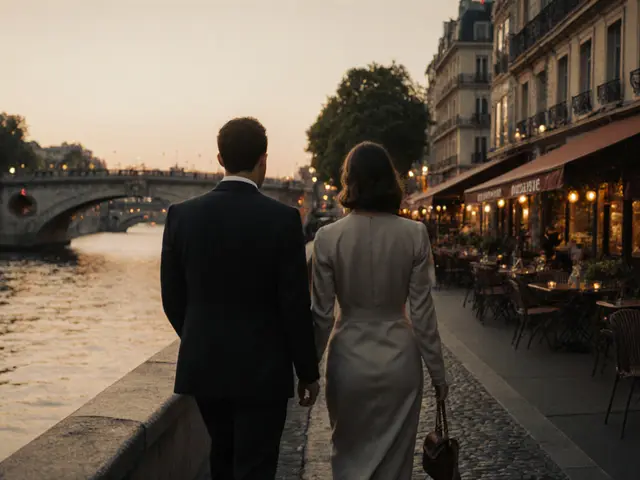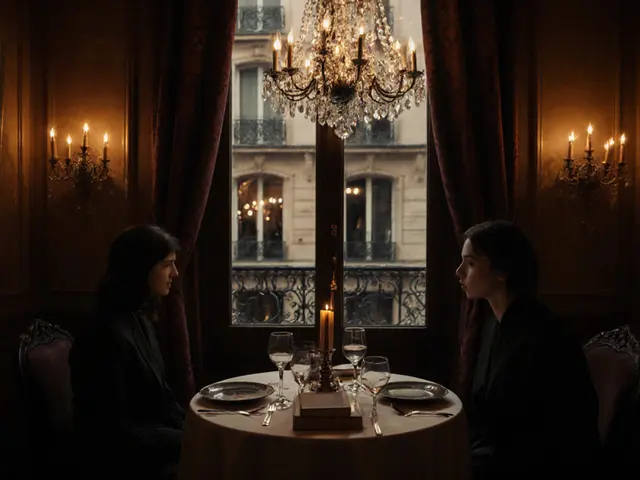A Paris nightclub that once bottled 3 a.m. in a glass-before it was ever a club. That’s the twist with Les Bains Douches. It started life as a public bathhouse in 1885, morphed into a celebrity-fueled nightlife lab in the late ’70s and ’80s, fell into disrepair, then came back as a design-forward hotel, restaurant, and club. If you clicked hoping for the real history and how it connects to what you can see today, you’re in the right place.
Here’s what you’ll get: a clean, no-nonsense timeline you can trust; the names that actually made the place; what still survives; what changed; and how to experience it now without buying into the myths.
- TL;DR: Opened as a public bathhouse in 1885; reinvented as a nightclub in 1978 by Fabrice Emaer with early interiors by Philippe Starck; hosted Joy Division (1979) and an avalanche of fashion, art, and music A-listers in the ’80s-’90s; closed for safety in 2010; staged a temporary artist takeover in 2013; reopened in 2015 as a boutique hotel, restaurant, bar, and basement club.
- Why it matters: It captured the energy of Paris’s creative underground and pop royalty in one room-then reinvented itself again for the 21st century.
- What’s original now: Restored details nod to the 19th‑century bathhouse; the vibe and programming reference the club years without freezing them in amber.
- If you’re visiting in 2025: Book well ahead for weekends, expect curated nights rather than wild free‑for‑alls, and look for design details that hint at the old baths.
The Rise: From Public Baths to Culture-Making Nightclub
First, the bones. The building opened in 1885 as a municipal bathhouse and laundry on rue du Bourg‑l’Abbé. The timing makes sense. Late‑19th‑century Paris pushed public hygiene hard-hot water, tiled rooms, steam-the kind of stuff working Parisians didn’t have at home. You went to get clean, socialize a little, and move on. Source trail: Archives de Paris building records from 1884-85 document permits for a bains‑douches on that street; that’s the core paper proof historians reference.
Fast forward to 1978. Fabrice Emaer-already a legend for Le Palace-takes the shell of the baths and flips the use case from washing to nightlife. The idea was cheeky: keep the sensual architecture, swap soap for sound. Early interiors brought in a young Philippe Starck, who sharpened the mood with reflective surfaces and stagey sightlines. You didn’t just go to dance; you went to be seen, to collide with fashion, art, and music in ways that felt new. If Le Palace was the theatre, Les Bains was the backstage that became the main stage.
The list of faces wasn’t hype; it’s in photos, diaries, and press clippings. You’d spot fashion editors shoulder‑to‑shoulder with rock stars; artists and models crisscrossing the tiled floors. The club was small enough for chance encounters to feel intimate. That density made scenes travel fast. One night might be lean and raw; the next, barring the door.
December 18, 1979, nailed its music history into the record books. Joy Division played a show here, captured live and later released officially as “Les Bains Douches 18 December 1979.” If you want proof the room wasn’t just for pretty people, that album is it: post‑punk urgency bouncing off old bathhouse walls. The tracklist and credits landed in 2001 via a formal release, sealing the date in black and white.
Through the 1980s and ’90s, the club’s reputation became self‑propelling. What kept it from drifting into caricature was curation. Programming wasn’t algorithmic; it was human taste-bookers and hosts who understood how to build a night. Fashion week parties were a different species from, say, a giggy Tuesday. You’d get under‑the‑radar bands in the early evening, and later the room would flip into a safer‑than‑it‑looked chaos. Anecdotes are everywhere, but the throughline is simple: Les Bains squeezed high and low culture into a single space and made it feel normal.
Fabrice Emaer died in 1983, but his blueprint-mixing tribes, staging scenes, making the door part of the show-stayed baked in. Management and ownership shifted over time, but the club kept its sheen through the ’90s, right as electronic music and fashion’s global machine hit their stride. The Instagram era didn’t exist yet. That helped. Memory did the smoothing, and mythology built on top.
| Year | What Happened | Why It Matters | Primary Source / Evidence |
|---|---|---|---|
| 1885 | Public bathhouse opens | Gives the building its tile‑and‑steam DNA | Archives de Paris, 1884-85 permits and municipal records |
| 1978 | Reborn as a nightclub by Fabrice Emaer; early interior by Philippe Starck | Sets the template for intimate, curated Paris nightlife | Contemporary press, interviews with Emaer/Starck, venue programs |
| 1979 | Joy Division live set on Dec 18 | Anchors the venue in recorded music history | Official album release “Les Bains Douches 18 December 1979” (2001) |
| 1980s-1990s | Fashion, art, and music elite frequent the club | Builds the legend beyond France | Press clippings, photo archives, personal memoirs |
| 2010 | Venue closes for safety/structural reasons | Ends the original club era | City safety notices; news coverage |
| 2013 | Temporary artist residency/exhibition in the emptied shell | Honors the creative past before renovation | Curatorial materials; press kits |
| 2015 | Reopens as a hotel, restaurant, bar, and basement club | Second life with design‑hotel polish | Official press kit; Design Hotels listing |
| 2025 | Continues as a hybrid space hosting curated nights | Shows how heritage venues can evolve | Current programming calendars; hospitality guides |
If you want a simple way to frame the first century: steam, not strobe. The second act: strobe, not steam. The third act: a careful blend of both.
The Fall, the Art Squat, and the Rebirth (2010-2025)
By 2010, the building was tired. Safety concerns shut the place down. That’s not romantic, but it’s reality for old structures that carried decades of heat, sound, and footfall. Here’s where things could’ve turned blank-just another ghost address in nightlife lore. Instead, the team embraced a creative pause.
In 2013, before renovations sealed the next chapter, curators invited artists to take over the empty shell for a short, one‑off residency. Walls became canvases; rooms turned into installations. It wasn’t a club comeback stunt; it was a respectful goodbye to an era and a bridge to the next. The show was heavily photographed, then dismantled. That ephemerality felt on brand for a place built on nights that disappeared with sunrise.
2015 brought the official reboot: a boutique hotel upstairs, a restaurant and bars on the main floors, and a club space downstairs. Yes, it’s different. That’s the point. You don’t stage a reenactment of 1982 and expect it to breathe. The new team leaned into design instead-quality materials, thoughtful lighting, and winks to the bathhouse past. Interior notes worth clocking: rich tiling that nods to 19th‑century mosaics, patterns that echo water, and a basement vibe that remembers the club’s low‑lit magnetism without cloning it.
On paper, the hotel counts just a few dozen rooms, not a sprawling tower. That scale keeps things intimate and helps the public spaces feel like they belong to the building, not just to hotel guests. Various sources from the 2015 reopening-the press kit and the Design Hotels listing-cite around three dozen rooms and suites (often reported as 39). That small footprint is part of why the venue can still pull the right crowd; it self‑edits by design.
What about the famous pool shots you see floating around? The bathhouse origins do mean water features, but don’t expect a public municipal pool vibe. Think private, moody, often event‑oriented. Some nights are about listening and watching. Others push you onto the floor.
Programming today isn’t chasing a past that can’t be replayed. Instead, it curates. Weekends book fast. Weeknights tilt toward tastemakers and in‑the‑know locals. The music policy varies with the promoter, from house and disco heritage to left‑field electronic to live sets that suit the room. During fashion weeks, the dial turns up-invites get tighter, and the door shifts from “firm” to “surgical.”
How faithful is the reborn spot to the club that made headlines? Honest answer: the DNA is there, but the metabolism is different. You’ll still catch the feeling that the city’s creative circuits meet here-designers after a show, musicians between gigs, editors dragging their rolling cases-but it runs through a 2025 filter: reservations, better sound management, stricter capacity, higher design. That’s not selling out; it’s survival with taste.
And if you’re here for music history, the Joy Division thread remains the cleanest touchstone. The live album is a receipt you can play. For fashion and art, you’re dealing more with photographs and press archives. Two good documentation paths: French newspaper archives from the late ’70s through the ’90s, and image libraries tied to Paris fashion weeks. You’ll find the names you expect-models, rock stars, designers-but the real fun is spotting the cross‑pollination: who stood by the bar with who.
How to Experience Les Bains Now: Tips, Myths vs. Facts, and Fast Answers
Let’s turn this into something you can use. Here’s the playbook that actually works in 2025.
- Plan around programming, not just the name. Check what’s on the night you want. Different promoters mean different crowds and sound.
- Reservations win. If you want the restaurant or a table for a busy night, book early. For the club, arrive on the early side unless you’re on a list.
- Dress for intention, not costume. Polished, not loud. The door looks for signals that you’re here for the night, not the selfie.
- During fashion weeks, patience. You can still get in, but the bar for entry rises, and the room flips between private and public events.
- Spot the history quietly. Look for tile work, references to water lines, and moody basement angles that recall the old baths.
Want the key points boiled down into a quick reference? Here you go.
| Topic | Quick Take | Pro Tip |
|---|---|---|
| Best nights | Thurs-Sat for energy; midweek for locals and tastemakers | Check promoters’ socials to match your music taste |
| Arriving | Earlier is easier; late peak often means tighter door | Split your group if you’re more than four |
| Dress code | Smart‑casual with intention | Comfortable shoes you won’t hate after 3 a.m. |
| Photography | Allowed in public spaces, but be respectful | Flash kills the vibe-and sometimes your chances |
| Food before | On‑site restaurant if you can snag a table | Early dinner turns into smooth entry downstairs |
| Crowd | Design heads, fashion travelers, music people | During big weeks, expect tighter guest lists |
Myths vs. facts, because the internet loves a tall tale:
- “It’s exactly like the ’80s.” No. The spirit shows up, the rules are modern.
- “No chance without VIP.” Not true. Early arrival, good attitude, and fit for the night still work.
- “Only tourists now.” The easy tell is the bookings. The calendar still draws locals and industry.
How the place sits in Paris nightlife right now:
- It’s a heritage venue running on relevance, not nostalgia merch.
- It competes by curation, design, and scale-not by being the biggest room.
- It’s a solid anchor night in a weekend that might also include a larger club or a left‑field live venue.
If you’re chasing history on the ground:
- Start upstairs. The hotel’s public spaces carry the most obvious design nods to the baths.
- Walk the line between bright and dim. Daylight shows materials; night shows mood.
- Listen for programming cues-flyers, playlists, posters-that echo older eras without copying them.
- Ask, don’t assume. Staff know the building better than your average blog.
Quick checklist for different goals:
- History nerd: Read the 2015 press materials, then compare to the room you’re in. Note where the story matches the space.
- Music fan: Spin the 1979 Joy Division album first, then book a night with a live act or a DJ who values dynamics over volume.
- Design lover: Look at tiling, fixtures, and circulation. You’ll see how the bathhouse logic still moves people.
- Night owl: Pick a promoter you trust, arrive by midnight, and aim for a spot with clear sightlines-bar corners are gold.
Common questions, answered fast:
- Is anything from the original baths still there? You’ll find restored and reinterpreted elements-tiling, patterns, and room proportions that recall the baths. It’s not a museum; it’s a living space.
- Can you visit if you’re not staying at the hotel? Yes. The restaurant and bar are public; the club depends on programming and capacity.
- Is there still live music? Sometimes, depending on the night. The calendar is king.
- What’s the single best history artifact I can “consume” now? The Joy Division live album. It’s the cleanest bridge between myth and proof.
- How busy is 2025? Busy. Paris is on a tourism and culture high. Plan ahead, especially around spring and fall fashion weeks.
Credible sources if you want to go deeper (no links here, but easy to find):
- Archives de Paris: 1884-1885 building permits and municipal bathhouse records for rue du Bourg‑l’Abbé.
- Les Bains press kit (2015): Reopening details, design notes, and room counts.
- Design Hotels listing: Property overview and design credits.
- “Les Bains Douches 18 December 1979” (Joy Division): Official live album release (2001).
- French press archives (late ’70s-’90s): Coverage of club nights, fashion week events, and cultural notes.
Next steps by persona:
- The historian: Pull the Archives de Paris references, then walk the building to map old floor logic to new circulation.
- The traveler with one night: Book dinner on‑site for a two‑hour window, then slide to the basement for the set you chose in advance.
- The music head: Queue the 1979 album on your way over. If the room breathes during breakdowns, you picked the right night.
- The photographer: Daylight for textures, late evening for silhouettes. Respect faces; let the room be the subject.
- The local looking for a reset: Midweek drink, corner seat, take the temperature. If it’s your crowd, lock a weekend slot next.
Troubleshooting:
- Turned away at the door? Regroup, trim the party, return earlier, and match the night’s style. No arguments; they don’t help.
- No tables left? Aim for the bar and treat staff well. Patience often opens doors faster than refreshing your email.
- Music not your thing tonight? Leave it. Come back on a promoter night aligned with your taste. This place runs multiple moods.
One last thing. Places like this only work when they know what they are. Les Bains started as a public good, shape‑shifted into a cultural catalyst, and now plays host with craft. If you step in expecting a frozen memory, you’ll miss it. If you show up ready for a room that remembers where it came from while making new nights that matter, you’ll get what people came here for in every decade: that little jolt that says Paris is wide awake.






Les Bains illustrates how spaces can reinvent themselves while keeping a thread of continuity. The transition from public baths to a cultural hub shows resilience. It's a reminder that architecture can serve both utility and imagination. Embrace the layered history when you step inside.
Reading this timeline feels like a guided tour through Parisian creativity. The way Fabrice Emaer blended fashion, music, and design set a benchmark for nightlife. It's impressive how the venue maintained relevance across decades. Keep exploring these intersections; they inspire fresh ideas.
the club still has some original tiles but the vibe is totally new.
Oh, the charm of a place that went from soap to strobe, isn’t it just delightful? You’d think the transition would be seamless, yet the residual steam still whispers through the modern lights, and the designers apparently love a good paradox, don’t they? It’s almost comical how history tries to dress up as a trend, while the walls silently judge the fashion of the night,